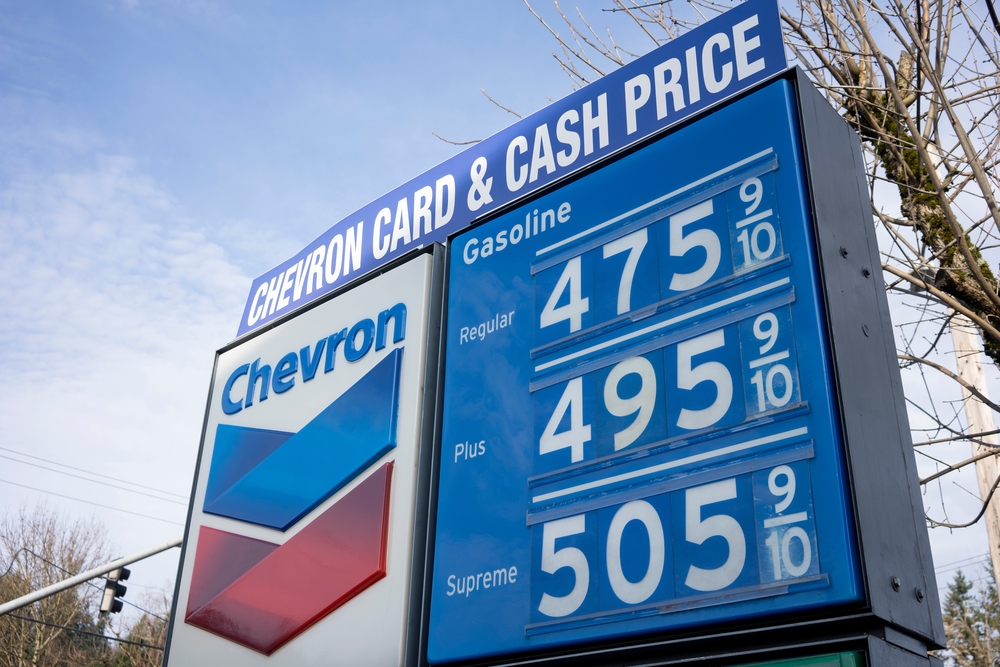Throughout my entire career as a financial journalist and policy analyst, I’ve kept an eye on one particular data point. That’s because it has an outsize impact on our society.
I’m talking about the price of gasoline.
As I’ll share, it’s so critical to both the economy and politics that any (good) analyst ignores it at their peril.
And right now the price at the pump is at a 10-month high.
The price of a gallon averaged about $3.86 last week. That’s 20% higher than the $3.22 we were paying per gallon at the beginning of the year.
In some parts of the country, sub-$4 prices are but a dream. The price of a gallon of gasoline in Utah is $4.22, and it’s a whopping $5.25 in California.

For the average American (who consumes more than 400 gallons a year), that’s several hundred dollars more they’re pouring into the tank instead of spending on groceries or other essentials.
And the expense can be much higher for workers who depend on their trucks or cars to do their jobs.
Of course, consumers aren’t the only ones impacted by rising fuel costs.
Here’s a brief rundown of who else loses as the price at the pump continues to rise… and who wins.
The Losers
Higher gas prices could prove to be a real headache for Jerome Powell and his colleagues at the Fed. These policymakers have been busy for over a year trying to bring soaring inflation back to earth. And they’ve had pretty good luck, as the year-over-year inflation rate in July was 3.2%, about a third of the level from a year ago.
Rising fuel prices could claw back some of that progress and force the Fed, which is now on hold, to raise rates yet again.
Of course, the Fed looks most closely at the so-called “core” inflation rate, which excludes prices of highly volatile items like food and fuel.
Still, those prices are critical to most Americans. And the price of gasoline drives consumer sentiment.
After all, most Americans don’t follow the consumer price index or the GDP figures. Instead, those huge signs along the road that show the daily price of gasoline guide their sense of how things are going.
And many people adjust their economic expectations and behaviors accordingly. A survey last year by AAA found that 59% of Americans said they would change their driving habits or lifestyles if the cost of gas got too high.
The sitting president also tends to lose as gas prices increase.
Indeed, approval of the current president seems to fall when the price of gasoline rises (and vice versa).
I always suspected this was the case, but a 2021 study by Data for Progress proves it. The study found that President Joe Biden’s approval and disapproval numbers were strongly correlated with gas prices.
So if prices continue to rise, it could be very bad news for Democrats next year.
The Winners
High gas prices incentivize many people to consider buying electric vehicles (EVs). So makers of EVs, like Tesla (Nasdaq: TSLA) and Rivian Automotive (Nasdaq: RIVN), could benefit if gas prices remain elevated.
Companies that make EV components, like batteries, or supply commodities, like lithium or copper, could also do well.
And of course, investors holding EV stocks, energy stocks and other commodities will be positioned for gains as gas prices rise.
Just remember that prices won’t rise forever.
OPEC – which cut production by another 1 million barrels a day in June – might reopen the spigots if high prices start to curtail demand. And the soaring heat this year, which shut down some refineries, will eventually subside.
Also, if China’s economy continues to decline, global crude oil prices could fall, taking gasoline prices lower with them.
Bottom line: While the rising price of gas is bad news for some, it may be good news for investors positioned to take advantage of it.
